Why do we need Women in 3D Printing? The what, the who, and the why of the blog that became a movement
Since 2014, Women in 3D Printing has grown to become a highly visible and influential international organisation. But what does the movement stand for, why is it proving to be so popular, and where does it go from here? Metal AM magazine's Emily-Jo Hopson-VandenBos spoke with the group's founder, Nore Toure, and fifteen members about their views of the organisation and the current status of women in the industry. These conversations reveal not only the challenges that we face to improve diversity in its broadest sense, but also the tangible benefits that members are seeing at both the personal and organisational level. [First published in Metal AM Vol. 7 No. 1, Spring 2021 | 60 minute read | View on Issuu | Download PDF]
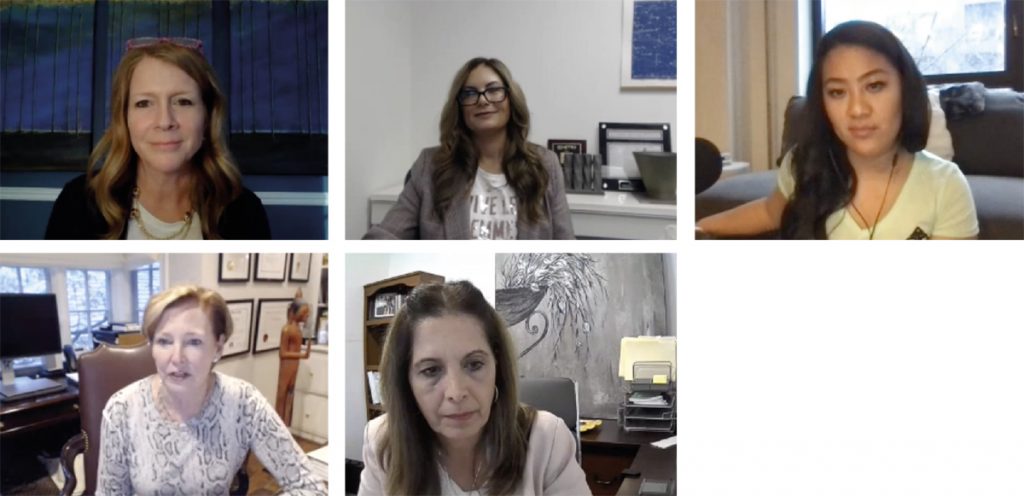
Between January 27–28, 2021, the TIPE Women in 3D Printing conference hosted 147 women speakers on its programme of over forty presentations, and was attended by 1,600 participants. Across the two-day programme, supported by 120+ participating companies, could be found a who’s who of AM industry talent: from the five women appearing on the ‘Being a CEO in AM’ panel on day one (Fig. 1), to leading figures in aerospace and automotive AM, to a crop of high-level global researchers. It would be fair to say that, for the first conference held by non-profit organisation Women in 3D Printing (Wi3DP), the scale of success and surrounding industry buzz was a surprise to many.
Since the spread of coronavirus (COVID-19) early in 2020, leading to widespread travel bans and industry disruption, the vast majority of industry events have moved online, with mixed results. While the energy and willingness to attend events from home was high in the early months of the pandemic, twelve months on, ‘Zoom fatigue’ and a rather jaded view of the content offered at some digital events has, to some extent, diminished collective enthusiasm.
The TIPE conference, however, saw a renewed level of enthusiasm for all involved, speakers and attendees alike. Why? Perhaps this can be put down to the speaker list: In an industry made up, according to the most recent statistics held by Women in 3D Printing, of only 13% women, and with only 11% of businesses owned or managed by women, the organisers of TIPE filled two days of high-level presentations with a 100% female speaker list. Compare this to the programmes of the majority of industry events and it becomes clear where TIPE found the novelty factor to engage a somewhat fatigued AM community.
This is not to criticise those other events in the calendar: AM as an industry consistently produces some of the most engaging technical and business conferences in the manufacturing space, with high-level speakers and content in no short supply. The availability of 147 women speakers at TIPE, however, the majority of whom had never appeared on the same programme, represented a groundbreaking moment for the industry, and women in AM in particular. By nature of the industry’s gender make-up, on a typical conference programme of approximately 150 speakers, comparatively few women are featured – indeed, the existence of a single all-woman panel at a typical industry conference is notable. It is clear that the shake-up offered by TIPE didn’t appeal only to the industry’s women; of the attendees, a large portion were male, and feedback from all genders was overwhelmingly positive and receptive to the change that the event represented.
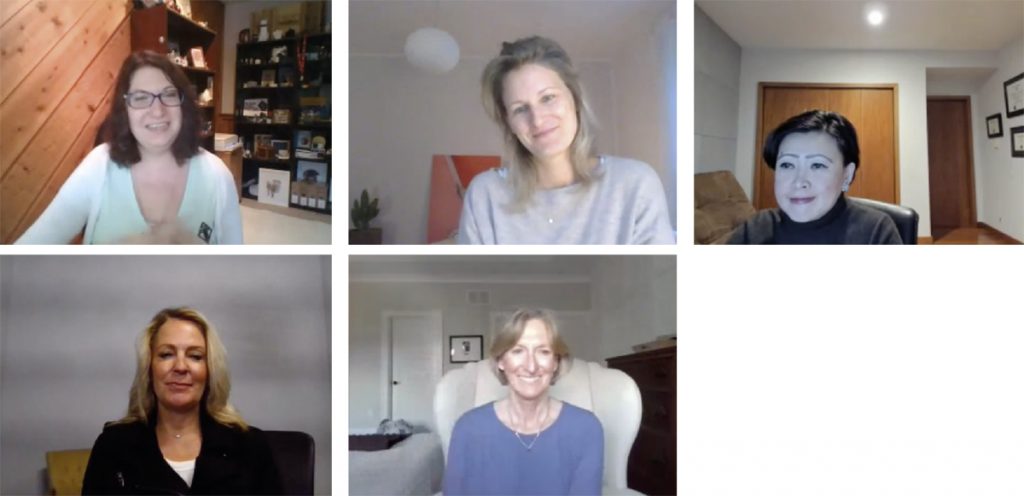
Though TIPE entered the calendar as a brand new feature, Women in 3D Printing has been around, and growing, since December 2014. The organisation was founded by Nora Toure, at the time General Manager & Director of Business Development at Sculpteo and now serving as Director, Sales and Service Factory Operations at Fast Radius, Inc., a global manufacturing services company based in Chicago, USA.
Toure founded Women in 3D Printing, initially, to share the stories of the women shaping the space, many of whom had come from outside the AM industry and brought with them diverse, cross-industry experience. This aim is still central to Women in 3D Printing: each week since its founding, the organisation has highlighted one woman in AM, building an extensive library of female leaders in the industry – including engineers, business professionals, teachers, researchers, artists, designers and others – in interviews which highlight their achievements and offer them the opportunity to share their viewpoints, ideas and advice on AM.
Since 2014, Women in 3D Printing has branched out into eighty global chapters, with regional chairs and ambassadors worldwide hosting regular chapter meetups which range from networking socials, in-person and via Zoom, to discussion panels and company tours. Women in 3D Printing further aims to facilitate a more inclusive and diverse AM workforce by hosting a packed job board and female industry speakers database on its website, and monitors gender diversity in AM through industry surveys and an annual statistical report. More recently, its efforts have expanded to focus on filling the oft-spoken of talent gap in AM through the establishment of a youth initiative, Wi3DP Next Gen, headed by Janet Kar, Head of Marketing at Wi3DP and SVP Digital Transformation at Link3D.
Criticisms faced by Wi3DP
As with almost any social or political movement, the sharp growth in the visibility of Wi3DP from its inception to the present has exposed its founders, ambassadors and proponents to criticism from certain spheres of the Additive Manufacturing community, typically in the realm of social media. The strongest criticism Toure and her ambassadors face is the accusation of ‘reverse sexism’, with some questioning, for example, why there is no ‘Men in 3D Printing’, and noting that the existence of such an organisation would be seen as outdated and sexist.
Other critics might dismiss the need for the movement, believing that women are well-enough represented in the industry as it stands, or that a lack of female visibility is due either to a lack of merit or interest in careers in AM, as opposed to a lack of opportunity. Some may even brush the organisation off as little more than a social club: a chance for women to drink wine and have a chat once a month on the company expense account!
In the period from January to April 2021, I interviewed Nora Toure and fifteen other members of Women in 3D Printing, who shared how they would respond to those critics, their respective experience of the organisation’s benefits, their perception of the number and status of women in the industry, and how Women in 3D Printing is helping to promote AM to a new generation of talent. The women interviewed here are employed in a range of positions in the AM industry, and include the presidents and CEOs of major businesses; sales and marketing professionals; academics; application engineers; research and development professionals; recruitment specialists and private consultants.
As a woman in AM myself, I can’t claim an unbiased view of this debate; the experiences related by the interviewees in this article reflect experiences that I have shared, and the discussions which Wi3DP’s founder, members and ambassadors have had with the group’s detractors closely echo conversations I have had with people both in- and outside of the industry on the same issues.
It is my hope that, in sharing the insight gained from these interviews, I can offer a space for the organisation’s members to explain and, perhaps, justify the group’s existence to those who remain dubious of its value or place in the industry.
The story of Women in 3D Printing
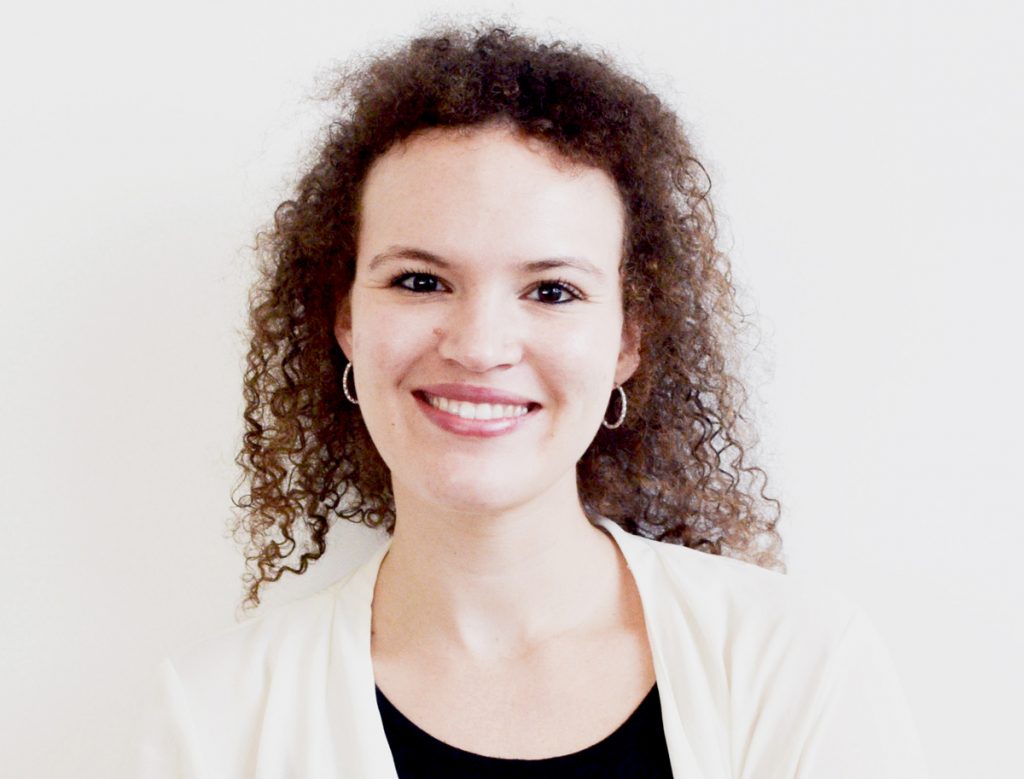
I spoke to Nora Toure on a Zoom call shortly after International Women’s Day 2021, as the latest in a barrage of interviews which had kept her busy leading up to, through and after the occasion. Calling in from her home in Denver, USA, Toure spoke to me about the experiences which drove her to establish Women in 3D Printing, the current status of the organisation and the AM industry, and her plans and hopes for the future.
Like many in this industry, Toure did not pursue AM as a career, but found her way into the field somewhat by chance in 2010. “It was mostly luck. I had no idea what 3D printing was,” she explained. In fact, French-born Toure had recently graduated law school in Paris when her interest shifted to a career in sales and business. After returning to school for a master’s degree in business management, she was offered the option of pursuing end-of-year internships at a number of companies, one of which was Sculpteo, the online Additive Manufacturing service platform, now a brand of BASF. “When I saw the printer, it was really appealing to me,” she recalled. “I thought, ‘woah, I think I get that – that’s pretty cool.’ I wanted to do that.”
While some of the other companies at which internships were offered were far more established, Toure followed her gut, took the risk, and joined Sculpteo, where she set about getting to grips with a new technology and industry. “I was lucky to have a really good team around me who helped me, and whose engineers were patient with me and taught me everything I knew about 3D printing in my early days. Customers, too, were really generous in sharing about their projects, and I absorbed it all.”
Though her experience at Sculpteo in France was overwhelmingly positive, it was on moving to the USA in 2012 to open the company’s first North American facility that the seed of Women in 3D Printing was planted. “The first two years I was in the US, it was basically just me – we had a few people coming in and out to help us, and I had the support of the team in France, but physically, it was me, in San Francisco, working from a co-working space,” she explained. “Developing my personal network so that I could be representative of the company and develop the business was harder than I thought it would be; being twenty-four and coming from Europe, I thought I knew everything about the USA and would just have to do everything I’d done in Europe, but I had no clue.”
As she sought to build her network, Toure attended every conference she could think of, and was surprised to find it an often-uncomfortable experience. “I didn’t necessarily feel welcome,” she stated. “I believe there were a number of reasons for this: I was a foreigner, I was young, I was a little bit shy and unsure of my place, I was not an engineer and could not necessarily pick up on some of the engineering-level conversations you can have at conferences, and I was a woman.” While she was unsure which of these factors was predominant in making her feel unwelcome, Toure explained that, as a woman, “I had a few awkward situations – really awkward situations – which were not necessarily pleasant.”
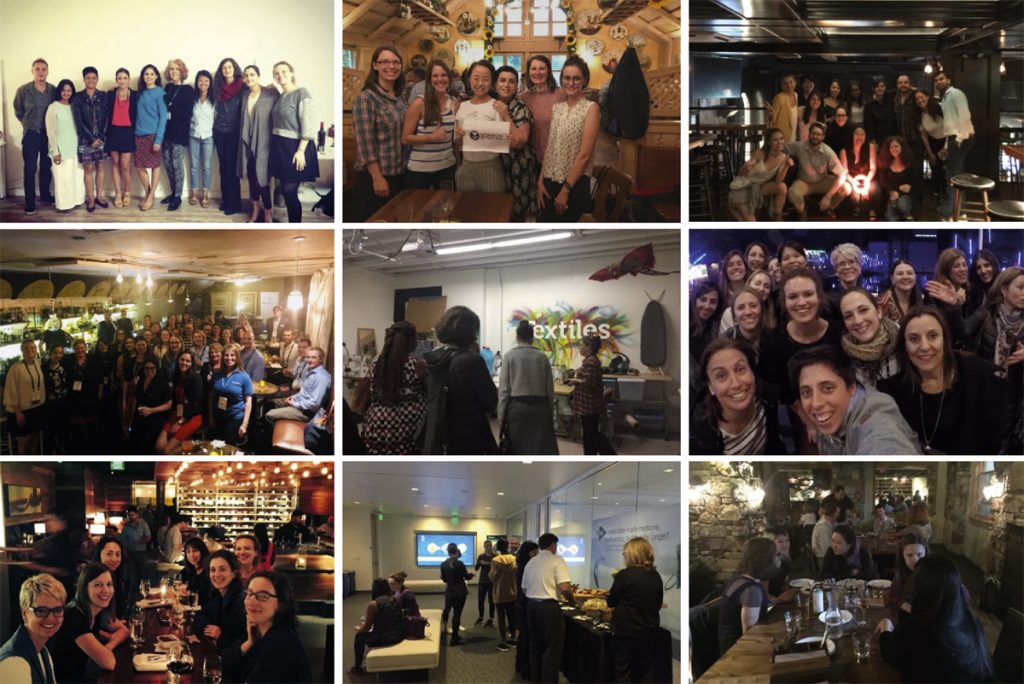
While she is quick to clarify that none of these situations were “particularly dramatic,” Toure recalls the overwhelming impression she received. “You don’t feel in your right place. You think, ‘I’m not sure I belong here.’” A recurring trade show experience Toure recalls will be all too familiar for many women reading this article: “A number of times, I had a male intern with me and found that when I tried to engage with men and women, they would say, ‘no, it’s ok, I’ll talk to the engineer over there.’ He wasn’t an engineer, he was my sales intern. This was really frustrating then, and though it happens a little less than it used to, it’s still really frustrating now.”
It was almost too much. “I told my husband I wanted to quit the entire industry – not because of my company, I loved working for Sculpteo, but I didn’t know what I was doing here, I had no idea it would be so hard, and I felt like nobody was helping me.” Toure’s husband’s response was simple – “He told me, ‘you’re not a quitter, you’re going to find a solution, you just have to think about it.’”
Toure thought about it, stopped trying to build a network in places where she felt unwelcome, and began to build a network on her own terms. “I started talking to the few people I had in my network, even in competing companies, who were feeling the same as I did and talking about it. It hit me that we were mostly women, who shared the feeling of being the only woman in the meeting room, or the experience of being at a trade show where visitors want to talk to the male you are attending with.”
From discussing these shared experiences and recognising the odd, sometimes alienating experience of being a woman in AM – or any STEM field – emerged the idea of Women in 3D Printing. Initially, Toure’s ambition was small: she started a blog on which to share the stories of women who had come to the AM industry from non-engineering backgrounds, with the aim of encouraging other women from outside the industry to consider roles in AM as an option. “I wanted to show that AM isn’t as opaque as it seems from the outside,” she explained.
While much more than a blog now, Women in 3D Printing still shares the stories of women in AM, and encourages women from all backgrounds to consider joining the industry. But how exactly did a blog started in 2014 grow into the global organisation, boasting a 23,000 strong membership, that we see today?
To begin with, Toure planned on writing one interview a month. Her original network of women in the industry comprised only twelve members; by interviewing one a month, she would treat the blog as a one-year project, wrap things up with the twelfth, and move on. But interest quickly grew: “Before I knew it, I had women from all over the world coming to me to say, ‘this is awesome, I want to share my story.’ I soon had a waiting list of over 300 names.” Now, Women in 3D Printing publishes new interviews every week, and the waiting list is still growing.
As Toure came into contact with more women in AM, she began to meet with some of the individuals she had interviewed and who were part of her network in San Francisco; these informal meetups eventually evolved into official Women in 3D Printing gatherings for women who wanted to invite their own industry connections, enabling yet more women to build their networks. “Before I knew it, I had someone in Paris telling me ‘hey, I want to do the same here, is it ok if we say it’s a Women in 3D Printing gathering?’ Months later, London was doing the same. Now, we have something like eighty chapters across the world; of course, now it’s a bit more organised, and we have official ambassadors, but this is how it started – purely organically.”
Drawing on Wi3DP’s talent pool: Past, present and future
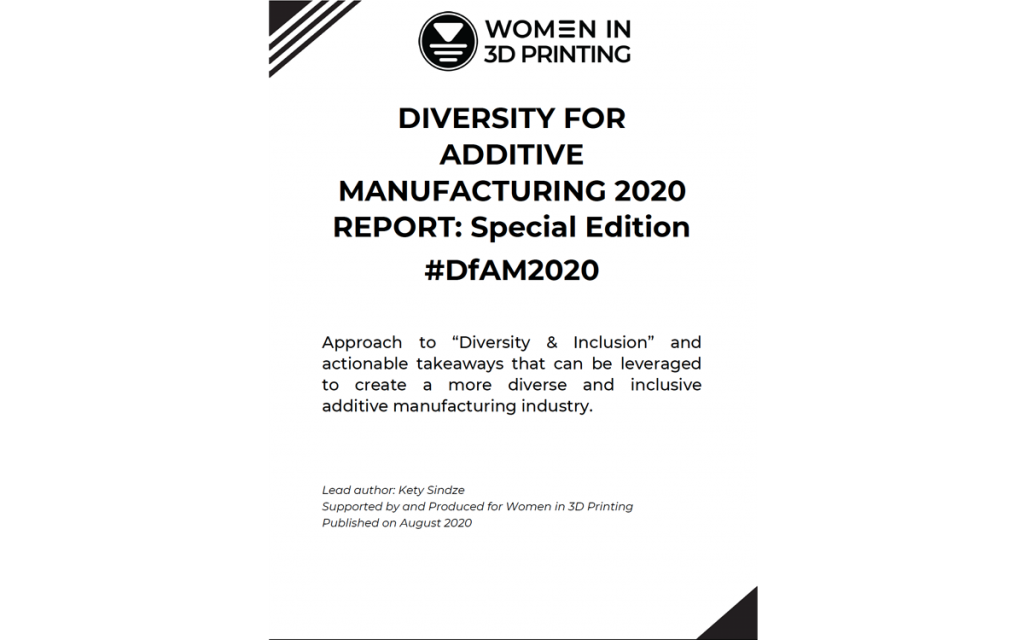
Many of Women in 3D Printing’s current activities are drawn directly from the volunteered expertise of its members. On the board of directors, industry journalist Sarah Goehrke, with a background as a research analyst, is behind the organisation’s semi-annual Diversity for AM report, which seeks to expand beyond the basic employment figures provided in the majority of industry reports to more closely study diversity in the AM industry, initially via discussion of gender parity, but, more recently, in a special edition on racial diversity in the industry (Fig. 5).
Wi3DP Next Gen, the youth initiative which Toure described as “almost a subsidiary” of Women in 3D Printing due to its rapidly growing size and ambition, was developed based on repeated requests for information on how the organisation was supporting the youth population in AM. “We had nothing in place until Janet [Kar] came in,” Toure explained. “Janet said, ‘I want to do something for youths, let’s try to put things together,’ and, before I knew it, she was putting a plan together; we now have a team of more than twenty young men and women volunteering for that specific part of Wi3DP. Now it has more than four different programmes. It’s becoming huge.” Toure added that she is “pretty hands off” with Wi3DP NextGen, preferring to leave it in Kar’s capable hands (Fig. 6).
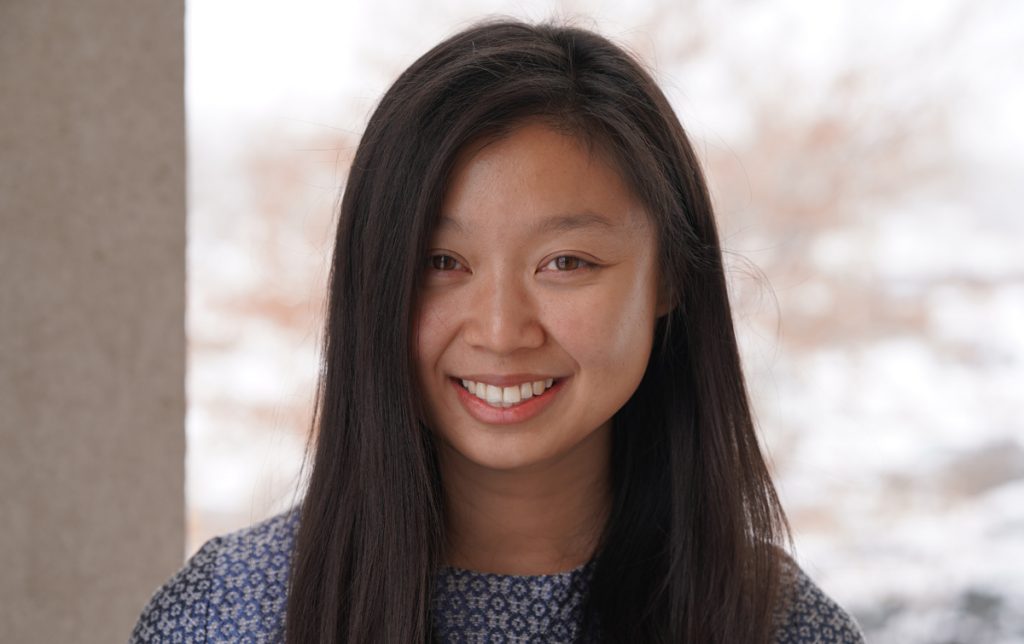
“Everything we’ve done so far has grown like this, from requests from volunteers who say ‘hey, I want to join, and this is an idea I have, what do you think?’” she explained. “Most of the time, we say ‘bingo, let’s try’ – sometimes it’s successful, sometimes we fail and do something else or reshape it, but this is how we grow.” This is an ethos Toure is keen to maintain going forward. “It’s really a community built for, and by, the community,” she stated. “Of course, we have some roadmaps now that we are becoming bigger and more structured – we know what we want to work on and prioritise for the year, but we will always keep a level of flexibility for anything new that comes from the community. I want us to make sure we keep this bandwidth and open-mindedness about things that we aren’t thinking of now or the real needs from the community that we need to tackle.”
TIPE’s success makes the establishment of further Wi3DP-led conferences something of a no-brainer, though Toure is clear that an event on the scale of TIPE 2021 will only be held once annually. She is conscious of the need to let Wi3DP’s global chapters ‘breathe’ in the meantime, making sure that the chapter events held every month have enough visibility and are well supported.
On the roadmap for the future of Women in 3D Printing, Toure has an immediate goal of developing a number of new programmes to respond to the changes she is seeing in the AM industry.
“The last year has been interesting for everyone, even more for our community,” Toure commented. “Up to now, I was mostly talking to marketing departments at all company sizes. More and more, I am now dealing with the HR department, and seeing new titles emerge in the industry like VP of People, Chief Transformation Officer, Diversity and Inclusiveness Officer. These are new titles that did not exist even a year ago. This is awesome, but makes me realise that what we are offering as a community to those companies might need to differ a little bit from what they expect; we know what we want to offer for marketing managers and for marketing efforts, but we still need to figure out how we can help companies who have those kinds of people in place and are really making [diversity] a priority.”
In the coming year, this is the work that Wi3DP will focus on; growing the number of companies it works with that make diverse hiring practices a priority, aiding in the development of their diversity-focused programmes and policies, and encouraging more companies to adopt this attitude.
Wi3DP is also expanding its focus increasingly from gender diversity to encompass racial and sexual diversity. Toure is clear that she does not only want to see the industry achieve a gender balance in future, but also a colour balance, from meeting rooms to conference programmes. Due to a lack of reporting within companies, statistics on diversity in Additive Manufacturing are hard to come by, but, as an example, Toure noted that while only 13% of individuals employed in AM are women, it is estimated that fewer than 5% of industry employees of any gender are Black.
In one of its first race-focused events, on April 20, 2021, the organisation hosted a panel titled Wi3DP Against Asian Hate, tackling anti-Asian harassment. “We want to make a statement that we’re supportive of all communities, because we want our community to be diverse.”
Women in AM on the benefits of Wi3DP
So, what are the key benefits offered by Women in 3D Printing to its members, both new and established in the AM industry? For Toure, the first thing that comes to mind is the immediate professional network Wi3DP offers. “We are a very welcoming community: membership is free and as simple as getting our newsletter. As a member, you have access to the network, and are able to get to know the women and men [who make up approximately 30% of the membership globally] in the community, and be part of an organisation which shares the same values.”
As a developing industry, AM often involves a degree of collaboration that can be global, or at least cross-organisational. Wi3DP also functions as an enabler of innovation and knowledge transfer by connecting industry professionals across all levels of AM, at various stages of the workflow. “We have panels on aerospace, on healthcare, on fashion – we tackle every sort of industry we can think of, so, as well as the network, you also have access to the knowledge shared there,” Toure stated. As founder, she also noted that she receives daily requests for introductions and recommendations from members keen to leverage the global network they are part of. “This can lead to new opportunities for both of them; I don’t need to know what, it’s none of my business.”
I asked the women I interviewed what they identified as the key benefit of their association with Wi3DP.
Melanie Lang
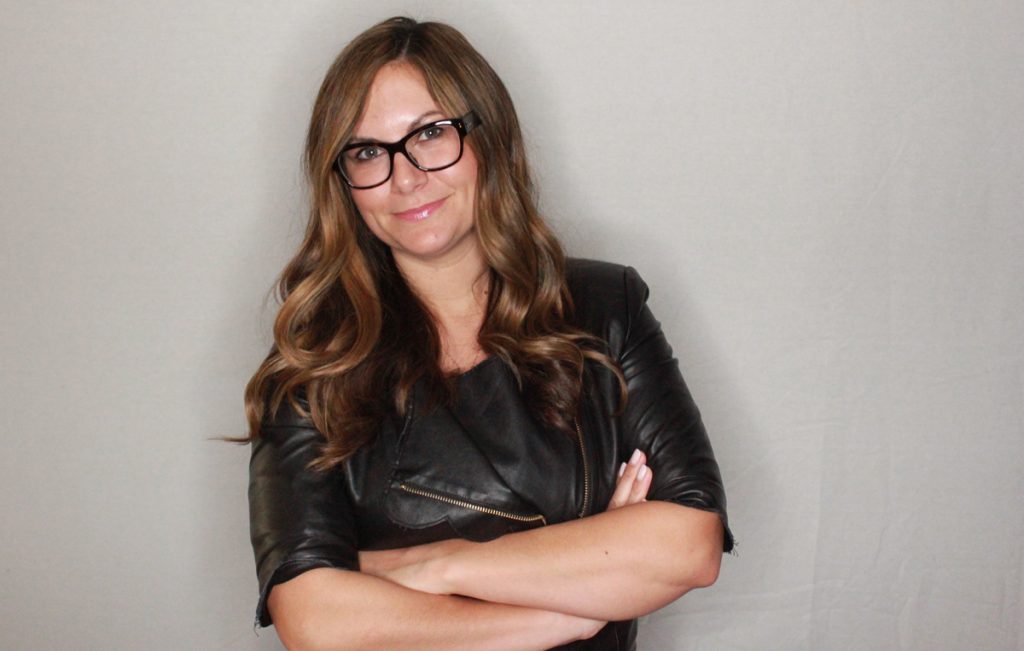
Co-Founder & CEO of FormAlloy Melanie Lang recalled how Wi3DP supported her transition into AM. “Several years ago at a RAPID event, I was new to the scene. I was in the aerospace industry and a hobbyist, so I didn’t have many relationships in AM. I met Nora and she instantly invited me to join the (much-smaller at the time) Wi3DP, which introduced me to some of my first contacts, now friends.”
This sentiment was echoed universally by every industry professional I spoke to, in all sectors: Wi3DP offers a gateway to an invaluable community and network in an industry to which many come as newcomers, and which can easily overwhelm. “I was instantly empowered with a network,” Lang remembered, “and the confidence that I had a support system to embark on my AM journey.” But Wi3DP did not only provide Lang’s initial points of contact; it remains a valuable tool for her and for FormAlloy to the present. “My network and the amazing people that surround me are my greatest asset,” she stated. “Wi3DP has enabled many of my connections and relationships, including suppliers, customers and dear friends.”
Marie Langer
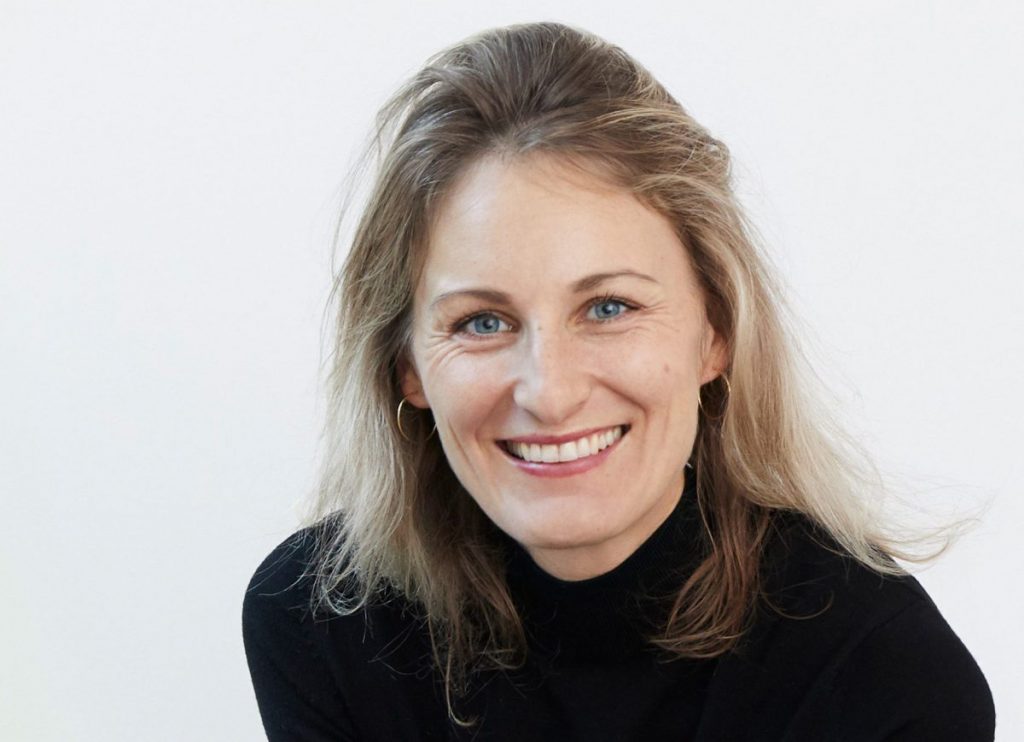
CEO of EOS GmbH, Marie Langer, has also found that the greatest benefit of membership is the network offered by Wi3DP. “I truly enjoy participating and engaging with the Wi3DP community as it is a great way to connect with a wonderful community, committed and excited about the prospects of 3D printing,” she stated.
Tali Rosman
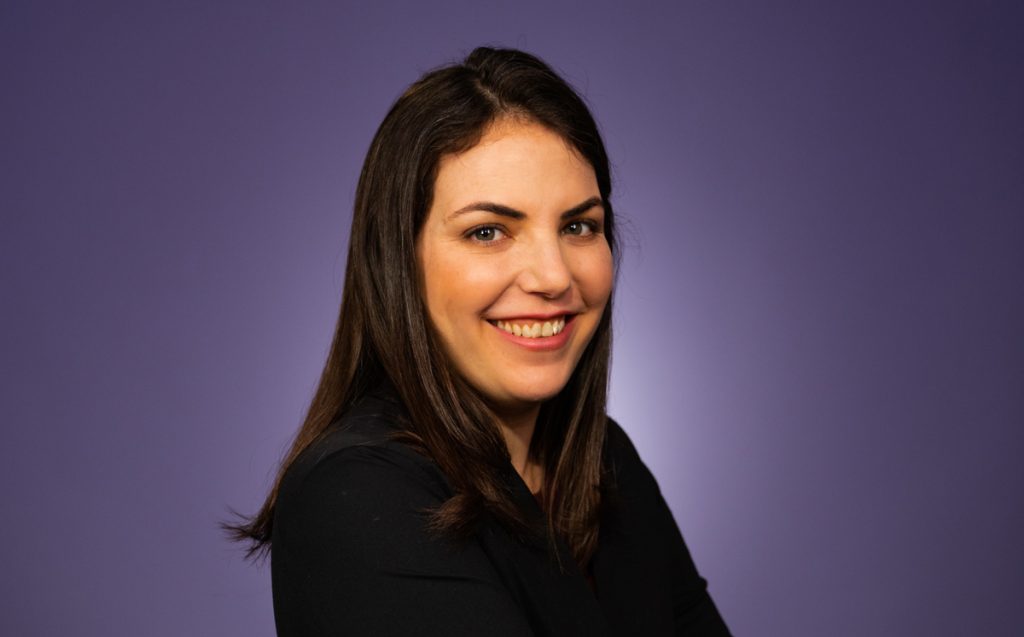
As vice president and General Manager of 3D Printing at Xerox, Tali Rosman explained, “Being involved with Women in 3D Printing has been an excellent experience for me so far. Being exposed to the incredible network of women in this industry has facilitated some important networking that will hopefully lead to some interesting partnerships down the road for us.”
Stacey DelVecchio
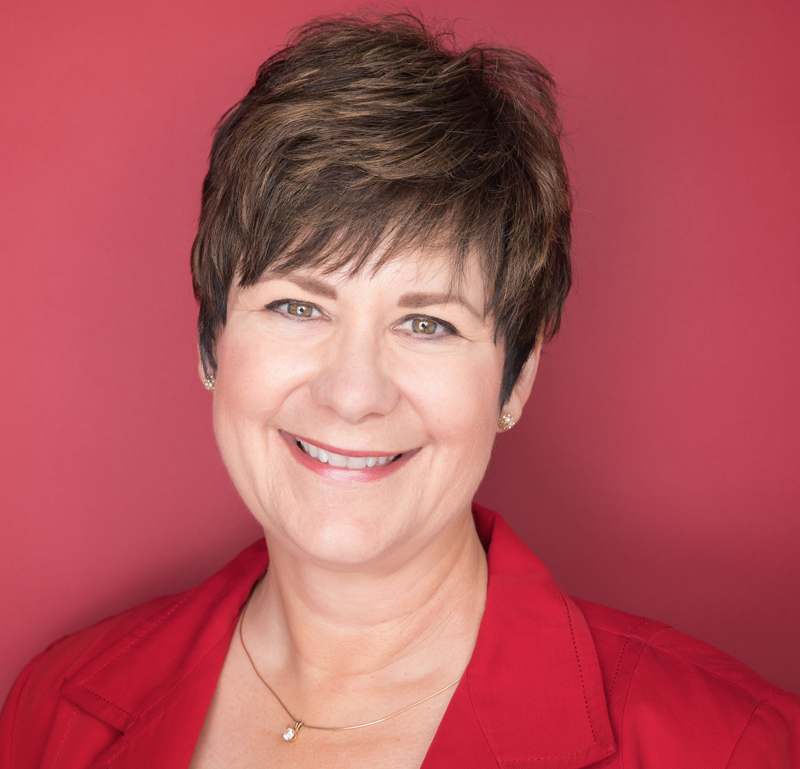
Long-time gender equality champion Stacey DelVecchio began her career in 1989 and served in various roles in her time in manufacturing before taking on the role of AM Product Manager at Caterpillar Inc. from 2014–2019. She is a former president of the Society of Women Engineers, and currently serves as a member of the SME Additive Manufacturing Advisory Committee and president of her AM consultancy, StaceyD Consulting. Her book, Women in 3D Printing: From Bones to Bridges and Everything in Between, will be published by Springer as part of its Women in Science and Engineering series in June this year. “Personally, Wi3DP is a place for me to stay connected in a safe and supportive environment,” she stated. “Yes, there’s good programming, but the environment of a supportive group of like-minded women in the same industry is where I see the most advantage. I have connections through Wi3DP that I would not have made previously; I feel like I have an ‘in’ through our mutual engagement with the organisation.”
Lynda McKinney
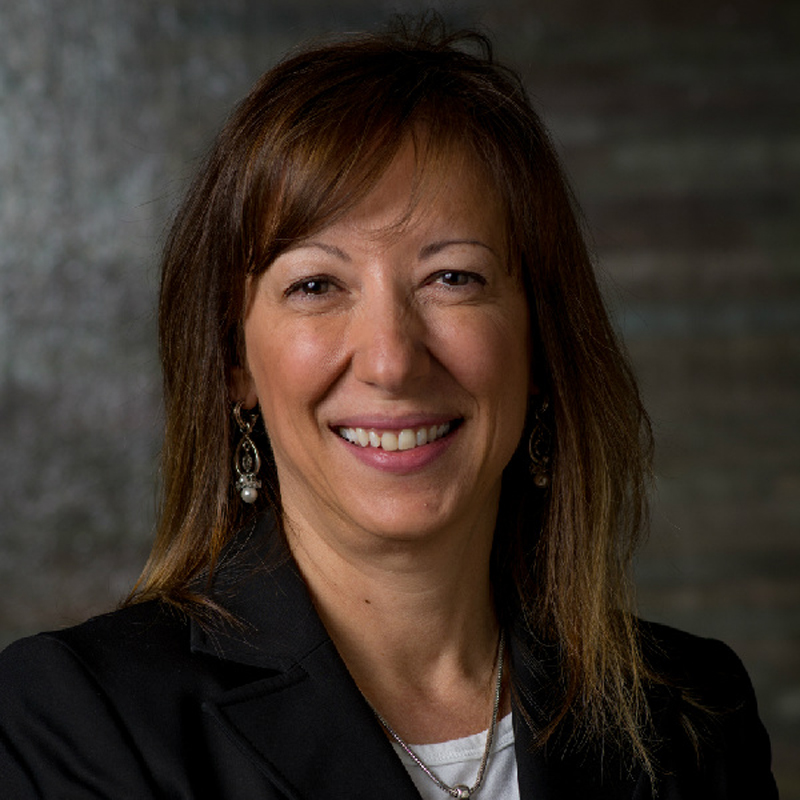
McKinney, VP of Communications at Desktop Metal and co-ambassador for Wi3DP’s Boston, Massachusetts chapter, shared her views on the benefits of membership in Wi3DP at both a corporate and personal level: “I chose to join Wi3DP as both a member and co-ambassador to help change the face of the industry as well as foster the fact that women can and do make a difference across all disciplines – engineering, software, marketing, HR,” she stated. “While there’s a huge lack of diversity in the tech industry, there is also a huge need for talent. By joining the tech industry at this critical time, women can make a lasting impact on the future of the industry and the technology we use every day. Not only can women change the industry, but we can change what the industry produces and ensure that the technology being developed today is created with both men and women in mind.”
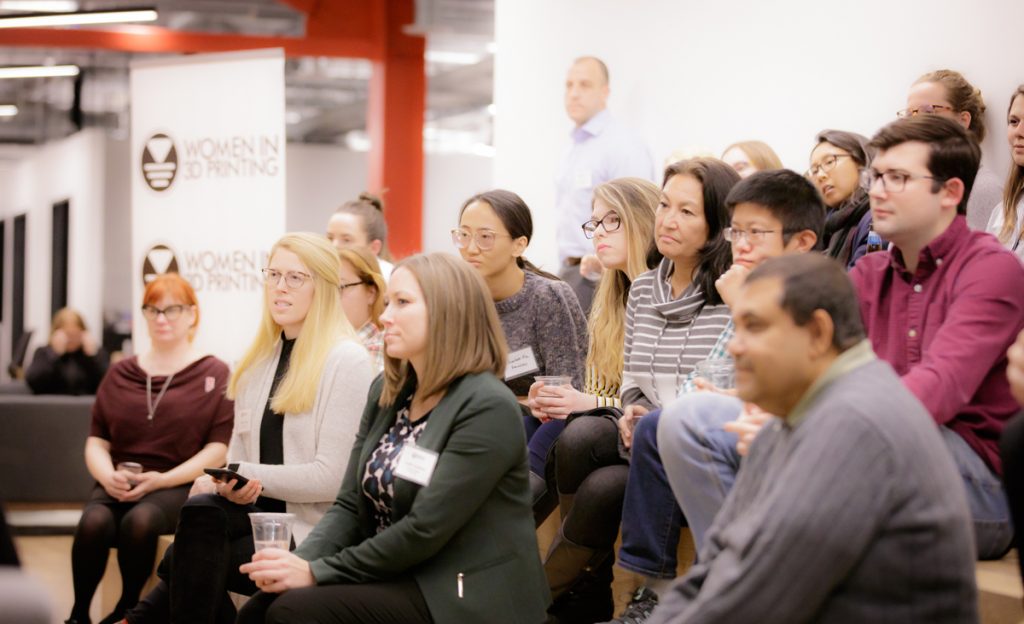
“More than just an organisation, Wi3DP has become a global movement of members who share the same values and same mission of striving for an inclusive technology industry,” she continued. “We will succeed by tackling it as a global community together. Much like the way the Additive Manufacturing industry is changing the way parts and products are manufactured, so too is this same community joining together to make a lasting change in our collective work cultures. While we may compete in the market, as members of Wi3DP we are colleagues, not competitors, working together for a common purpose – to educate, empower and celebrate women. For companies to recruit top talent, it’s important that they show the importance of inclusion and a true commitment to closing the gender gap in the workplace. One way to do that is to join Wi3DP, where they are showing they, too, embrace and celebrate this movement.”
Alison Wyrick Mendoza
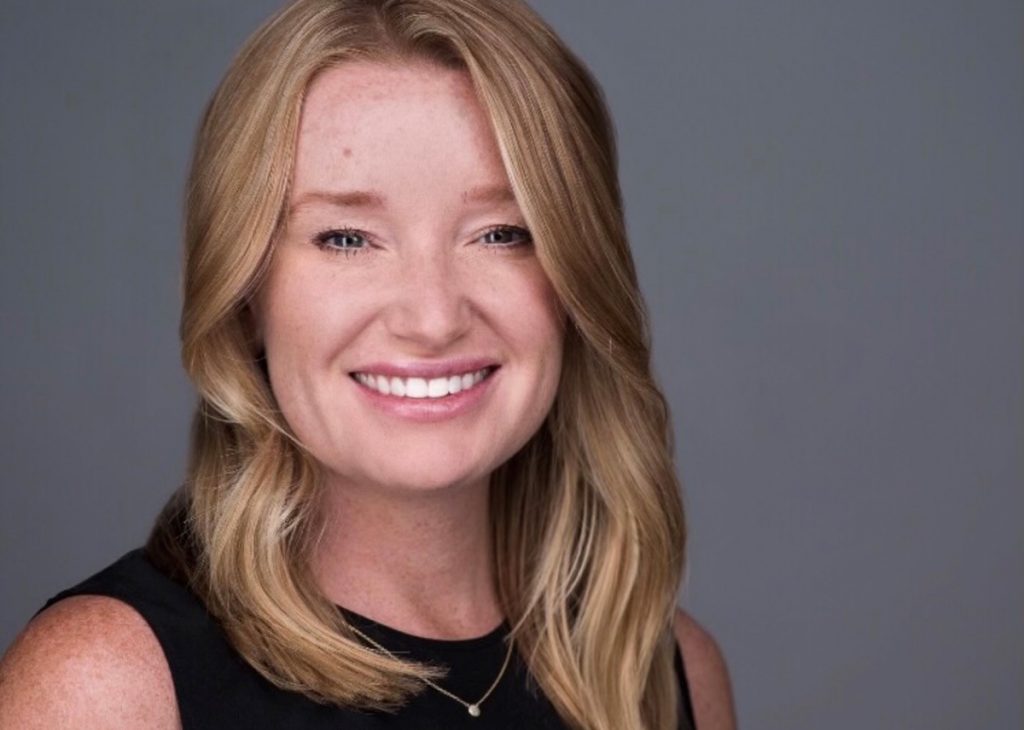
Mendoza, Senior Product Manager & Product Marketing at GE Additive, and one of the most recognisable faces in Additive Manufacturing on social media under the handle Additive Alison, expanded on this sense of a community working toward a common goal, saying, “I really enjoy the networking aspect, of course. But the ability to be part of an organisation that influences – through action – opportunities for young women to pursue and succeed in STEM roles is, perhaps, the greatest benefit.”
Jennifer Killingback
Additive Manufacturing recruitment specialist Jennifer Killingback, Director North America of Alexander Daniels Global, stated, “Wi3DP is a great resource for the Additive Manufacturing industry as a whole. A wealth of knowledge, different backgrounds and experiences to share. For me personally, I have been able to make connections with women who are interested in advancing their careers within the industry. It is exciting to see more women become involved at all levels and disciplines within Additive Manufacturing.”
Dr Laura Cordova
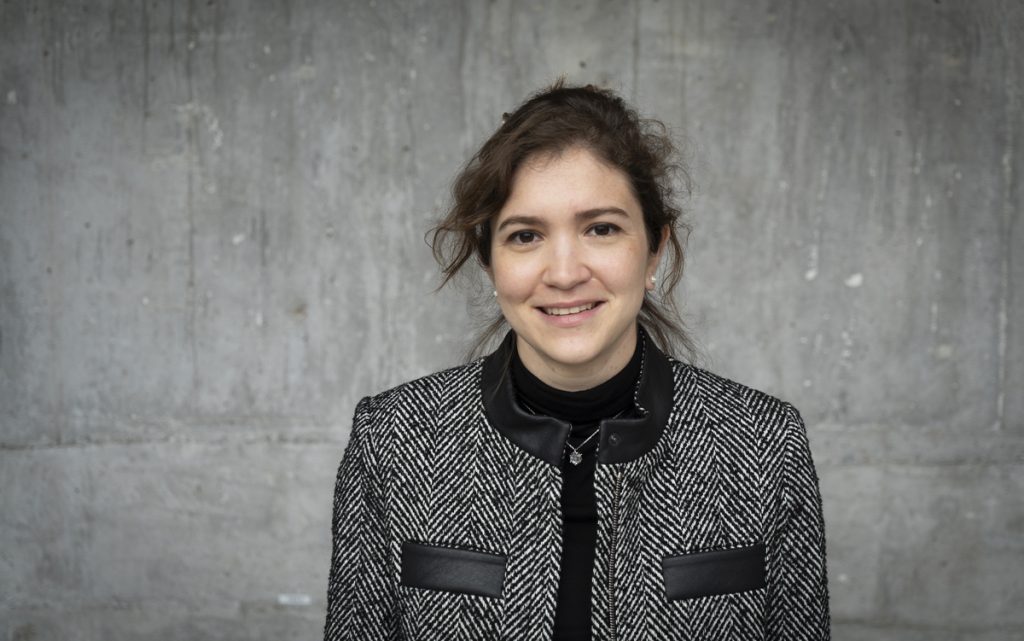
Dr Cordova, a researcher in metal AM who previously served as Project Manager Additive Manufacturing at the Fraunhofer Project Center, University of Twente, the Netherlands, before joining Chalmers University of Technology in Sweden as a researcher in March 2021, recalled: “I came across Women in 3D Printing online events such as happy hour which were fun and inspiring; a great opportunity to meet women with similar and relatable backgrounds from all over the world. Having relocated several times around Europe and worked in many industrial fields and academia, these connections were very valuable. In one of the first events, I met Valeria Tirelli and Elvira Leon. They are truly an inspiration to me, their spirit and passion for 3D printing is contagious.”
Of the members I interviewed for this article, it was, unsurprisingly, those employed in research and development and those new to AM who had benefitted the most from the knowledge-sharing facet of Wi3DP. As Dr Cordova explained, “The connection of R&D with industry is vital to maintain an innovative and fast-growing ecosystem. I think the Wi3DP network plays an important role in this. The last four years I have worked with the influence of powder handling activities such as reuse, reconditioning, rejuvenating and storage on the process development and quality of metal parts. This is key for metal AM users to control the process repeatability and part reliability. In fact, understanding very well all the powder-process interactions helps to take decisions towards a more cost-efficient and sustainable process,” she noted. “In one of the international events, I met Sherry Handel, Executive Director at the Additive Manufacturer Green Trade Association (AMGTA). She was interested in my research, we connected on the importance of having more control on the material life cycle. This has been positive in the later development of my projects on this topic.”
“In my previous job at the University of Twente, I worked on projects with materials typically used in aerospace such as Inconel 718, Ti6Al4V and Scalmalloy,” she continued. “My experience in this industry was key to my participation as a panellist at the first TIPE conference; I could exchange experiences on the topic with industry experts. My participation in this event, with plenty of networking opportunities, resulted in contacts and collaboration for future R&D projects.”
“In my current position at Chalmers University of Technology I focus on the sustainability component of AM,” she continued. “Here, I research aspects of the powder life cycle for AM processes: from powder production, to the efficiency of powder utilisation during AM, powder rheological characterisation, and material recycling. The Wi3DP network provides great opportunities to connect with professionals at organisations both in Europe and worldwide with an interest in improving their process cost-efficiency while reducing the ecological footprint.”
Lisa D Block

Director of Global Sales and Marketing at Hybrid Manufacturing Technologies, Lisa D Block is a newcomer to Wi3DP and has found the knowledge-sharing aspect the organisation’s most useful offering to both her and the company she represents. “I have only been a member of Wi3DP for a short time, but I believe it has absolutely been a benefit to my company,” she stated. “I gained a client at the [TIPE] conference and have personally benefitted from all the knowledge and personal experiences shared via the various speakers and events.”
Maddie Frank
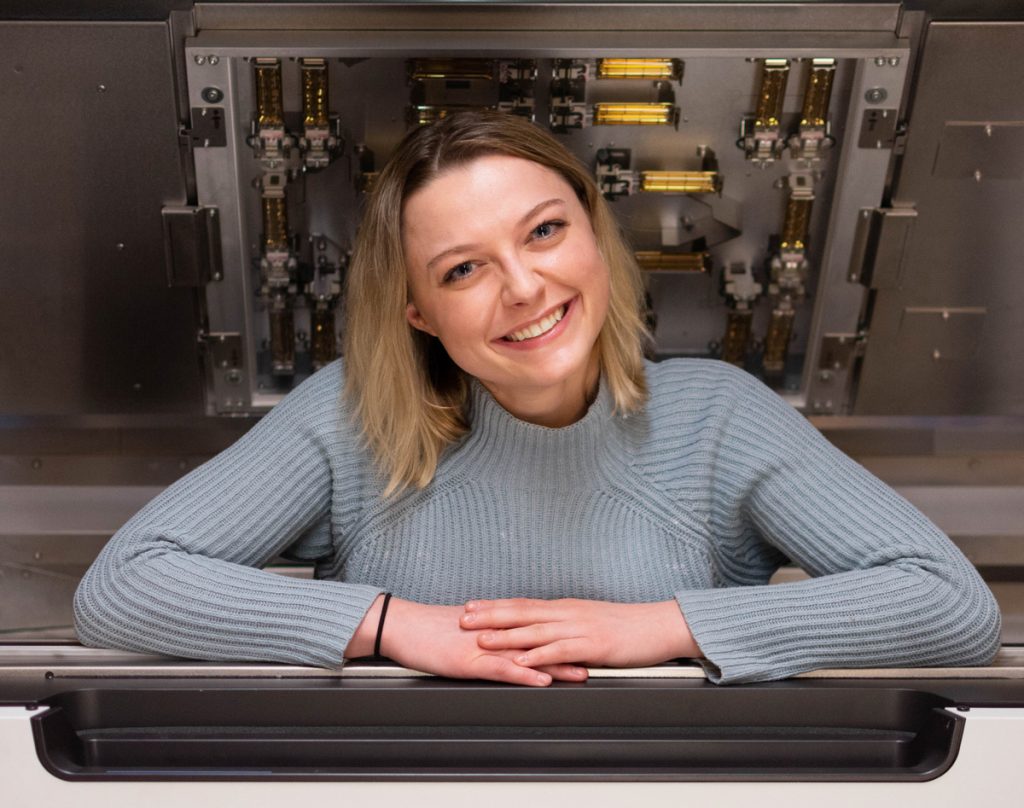
An Additive Manufacturing professional and recent graduate from the Electrical Engineering programme at UW-Milwaukee, as well as owner of AM consulting firm W1 Consulting, LLC, Maddie Frank explained that prior to becoming familiar with Wi3DP, she hadn’t previously taken an interest in other ‘Women in…’ organisations due to less-than positive experiences with university-level groups. “In my university, a lot of ‘Women in…’ groups didn’t do a lot, or what they did was based on saying ‘these are all the horrible things you can expect when you get into the workplace: men are going to do X, Y, Z and you’re going to have no choice but to take it,” she explained. “For me, I’ve always been in a male-dominated field of study in sports, so even in work now it’s like – yeah, you get this every once in a while, but for me it hasn’t been fully systemic.”
However, once she began to take an active part in Wi3DP, with access to the network of contacts the organisation offers, Frank quickly saw the benefit of membership. “I will say that [before joining Wi3DP] I did not know very many women in this industry. I can show you my Rolodex up until July, and it was pretty much just fifty-five-year-old men – who I love, they’re absolutely fantastic – but I pretty much only interacted with men in this industry, and Wi3DP, just by nature, brings together a lot of women who work in the industry that you might not necessarily know about, or who maybe you see on LinkedIn and think, ‘who are you and what do you do?’ So it really provides a great way where you can speak and connect with women.”
Frank cited another benefit which she noted might ‘get her some flack.’ “A lot of times, when you’re the single woman in the engineering field, you have your niche and you’re good at it, and then another woman comes in and ‘encroaches’ on your space, and you feel like – ‘Oh, shoot.’ […] Not many people admit it, especially if you’re a woman, but I will: I initially didn’t like women that came into my space, but Wi3DP has allowed me to go out there and really get to know these women, see that they’re actually just really cool people, and understand and start training myself against that initial knee-jerk reaction.”
SJ Jones

A full-time Additive Manufacturing Application Engineer at Siemens Energy and another well-known face in the AM Twittersphere, where she tweets under the handle @inconelle, SJ Jones joined Wi3DP roughly a year into her Additive Manufacturing career. Jones shared how the connections she has made through the organisation have impacted her on both a personal and professional level:
“I’ve hugely benefitted from meeting women not only at all levels, but also across different industries. Christina Perla has been amazing in opening my eyes to being an immigrant and a small business owner in the US. On another hand, Amy Alexander has brought up discussions with me about the role of 3D printing in patient-specific care and its direct impact outside of just surgical metal implants. I’ve also been fortunate to meet women from all over the world. Alex Kingsbury, from Australia, gives a different perspective to how she approaches AM by getting companies competitive in innovation with newer AM applications.”
“Success isn’t linear, and I think that ‘success’ in AM is multi-faceted,” she added. “Being able to hear the stories of these women and the different journeys that they have taken is inspiring. Failing is easy, but getting back up and finding the courage to try again? That’s the hard part. But hearing their stories makes that hard part just a tad bit easier because it’s a burden we all share. In our group, we all want to see each other succeed and there’s a stronger sense of camaraderie.”
Filling the talent gap: How the AM industry can benefit from a wider talent pool
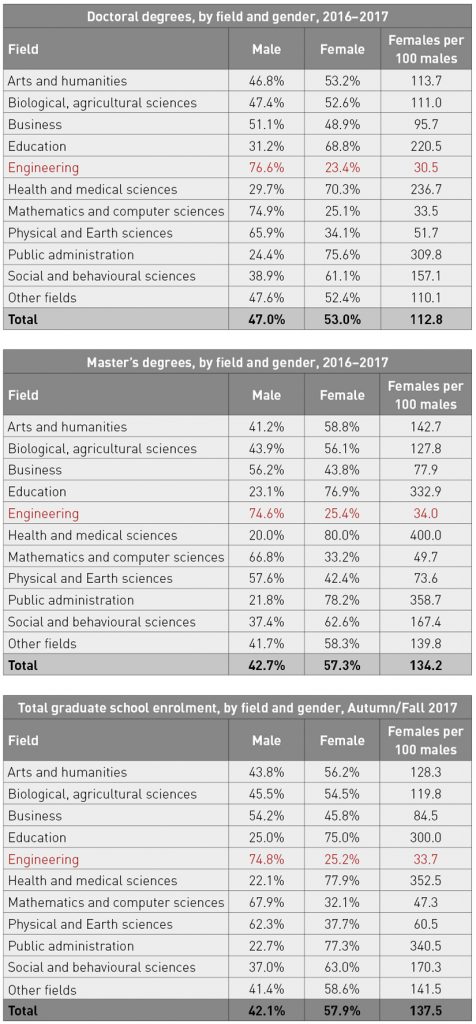
As a rapidly-developing new field, Additive Manufacturing’s growth and industrialisation is, to an extent, reliant on the recruitment of new talent into the industry, whether from other fields or education. But, as SJ Jones pointed out to me, “there’s a leaky pipeline in getting more women into the talent pool. We comprise 50% of the population. As a whole [taking into account all subjects], more women are earning PhDs than men – outpacing them in education by 137 to 100 (Table 1, [1]). This means that there are vastly more qualified female candidates than male candidates, right? Unfortunately, in a microscopic world like AM, you see the industry has yet to catch up to the reality. I think I saw a statistic in the Alexander’s Global survey last year that stated only 11% of the industry was female – that’s barely one in ten” (Fig. 18).
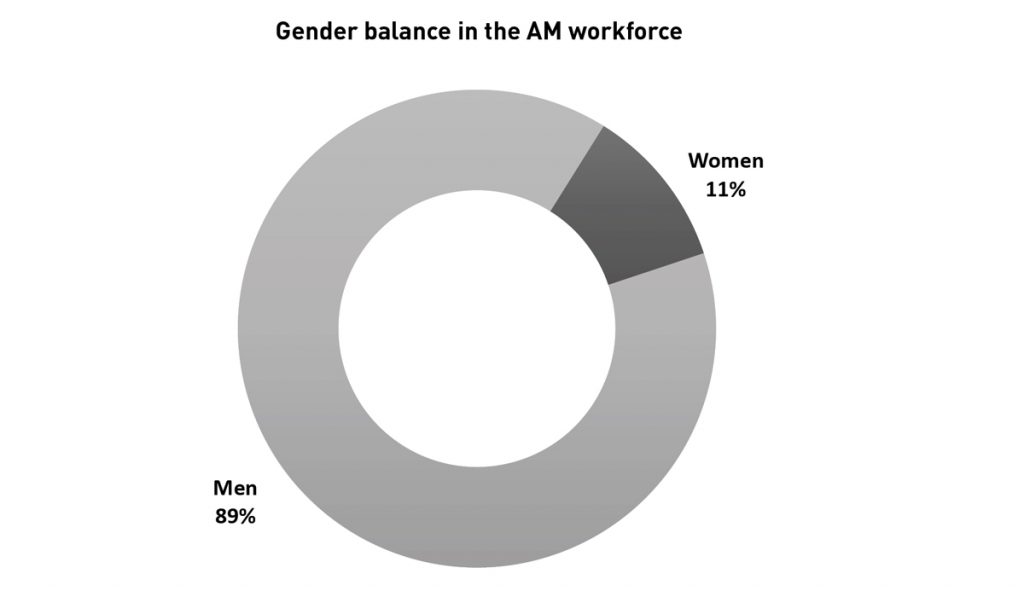
To some extent, this may be because AM shares the image problem of most STEM fields in that it appears, from the outside, to be a male-dominated field – whether this is true or not.
“The image problem definitely exists,” stated Nora Toure, “and it’s the product of a representation problem that is not just related to gender diversity, but diversity in general – if you don’t see someone who looks like you doing something, it’s really hard to put yourself in that person’s shoes, or skin. This has been a problem forever; it was a problem when I was younger and choosing my career path, and it’s a problem now.”
I asked the women I connected with to what extent they believe this image might be damaging the industry’s ability to recruit new talent, why we need diversity in AM, and how far they think Wi3DP, and the industry, have already come in terms of addressing the image problem and promoting the hiring of more women.
Highlighting a potential lack of awareness, at an industry level, of the damage done by the misconception of AM as a ‘male field’, SJ Jones observed, “I don’t think that most see it as damaging. When you’re part of the ‘in’ crowd or the overwhelming majority it’s harder to notice who is ‘missing’ from the room. As a woman, it feels very isolating as you walk into a room and every face echoes how much you don’t belong there. I think Wi3DP has come far in addressing this perception in giving women the space to be themselves and to be the majority in a room on a subject we are all incredibly passionate about: 3D printing.”
“Prior to my experiences with Wi3DP, the women I interacted with were very few,” stated Lisa D Block. “In fact, the TIPE conference was the first time I was able to see so many female engineers and executives in the same place, but it was so refreshing to see. I think that when there is any group that could appear to hold a monopoly on any industry, it makes people that don’t fit the predetermined description less likely to apply for those positions, leaving the company to just select anyone versus the person that may be the most qualified for the job. Ultimately, the company and the industry will suffer as a result of people’s hesitancy to apply.”
Dr Melissa Orme, Vice President Boeing Additive Manufacturing, added her perspective: “I think that there have been great advances in promoting diversity in STEM in general. That said, long-standing societal biases still exist that tend to guide many young girls away from STEM areas. I think these biases need to be addressed at the early ages of education and development, as they affect the choices that girls make in school that ultimately impact their professional direction. Once on a certain path, it is difficult to ‘correct’ without having the proper academic preparation. At Boeing, we are paying close attention to improving the representation and inclusion of women throughout the organisation – particularly in STEM careers and leadership. The underrepresentation of girls and women in STEM fields is a global challenge.”
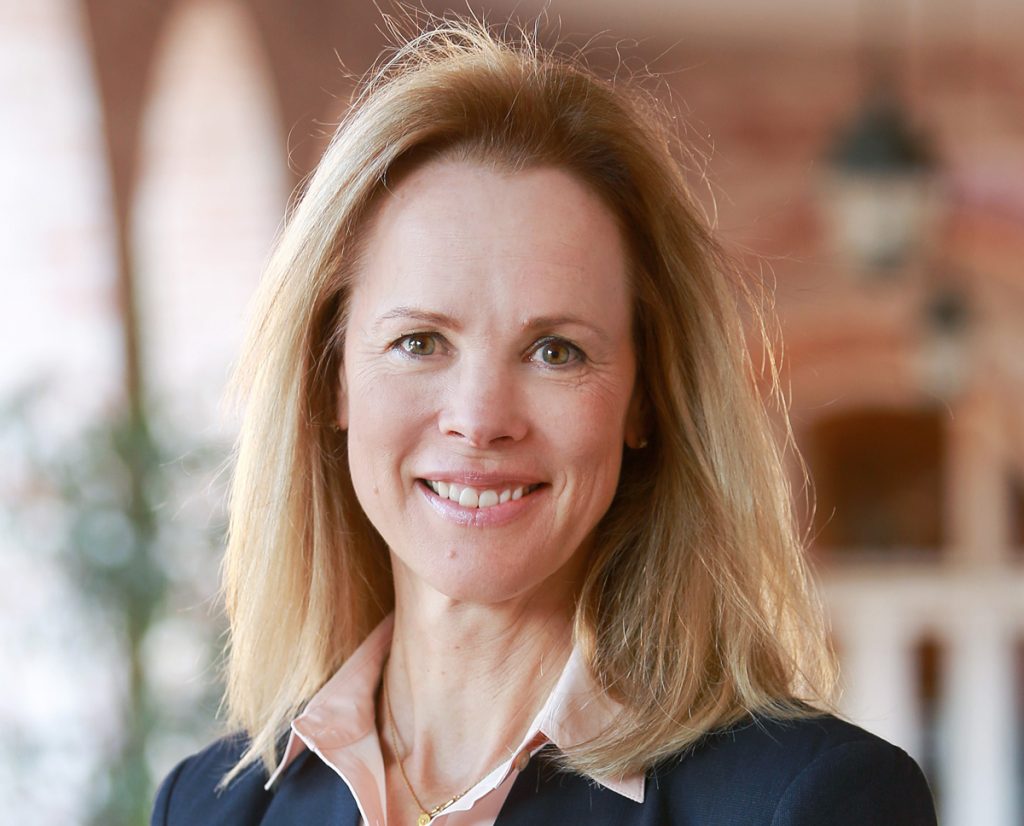
Melanie Lang sees great strides being made in improving the outside perception of AM among prospective talent. “Wi3DP has improved the perception that manufacturing in general is male dominated by creating a powerful and well-respected community of all genders that work together to solve some of the most impactful and interesting challenges of our time, and that’s what it’s really about – people working together to bring the best ideas and experiences to move the industry forward. The organisation has also removed the myth that the talent pool is male based and most of the experts are male; there is a large group of qualified, experienced experts that are not only male.”
Alex Kingsbury, Additive Manufacturing Industry Fellow and Engagement Lead at RMIT University, and Women in 3D Printing’s Regional Chair for Oceania, stated, “The great thing about AM is that it is a relatively new field that is less shackled to the traditional manufacturing image, which is seen as more male-dominated. Before Women in 3D Printing started, I only knew a handful of women who worked in the field, but now I know hundreds! And I only need to go to the Women in 3D Printing website to see a huge range of interviews with women who are in 3D printing from all over the world.”
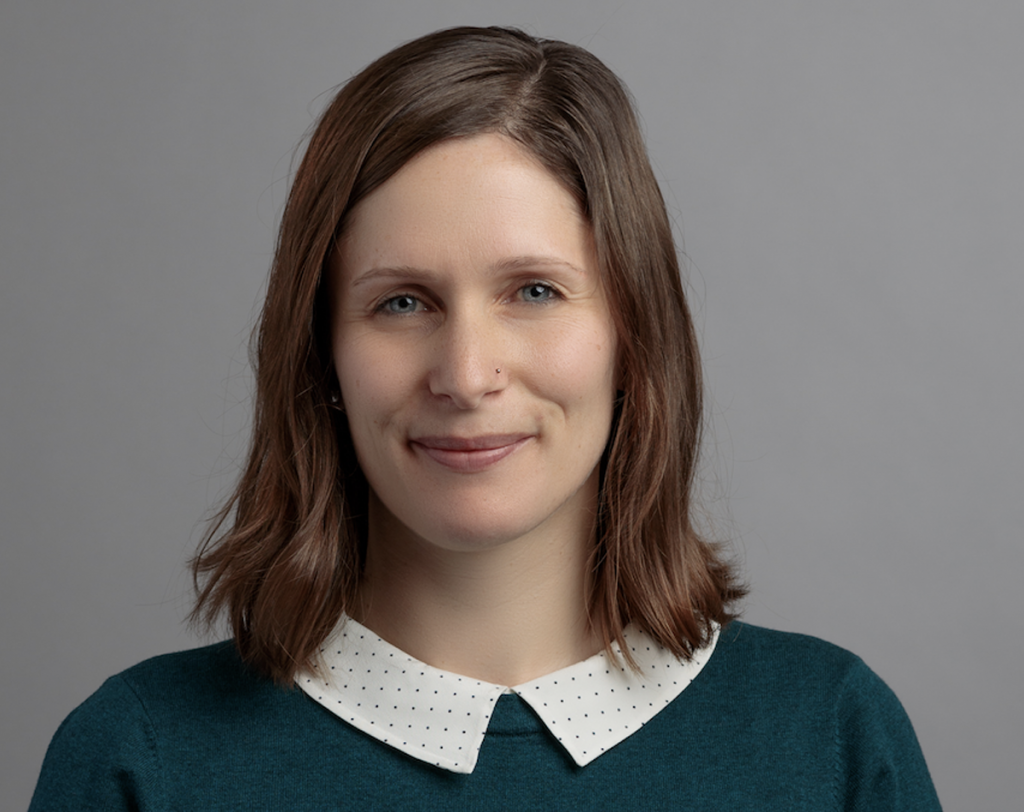
“One thing we know for sure is that diverse teams deliver better results, and this shows in the bottom line, so there are very good business reasons for creating and retaining diverse teams,” she continued. “What we want is a diversity of viewpoints, experiences, approaches, and thinking styles. The way we control for that is through these diversity markers, or social indicators. When women consist of 50% of the population but only 13% of the workforce in AM, then we know we have a gender diversity issue that we should be addressing. There are plenty of reasons why and how we socialise girls and women to not choose certain career paths, but part of the solution is to promote and highlight women who are working in the industry – if she can see it, she can be it!”
This, of course, is where Wi3DP excels. “You only need to look at the recent TIPE 3D conference to see how much of a good job Wi3DP does in promoting and highlighting talented women in 3D printing,” Kingsbury continued. “I was blown away by the depth and breadth of the speaker line-up!”
“From many stories I’ve heard, having access to the Wi3DP network has been just the encouragement that was needed to pursue 3D printing, or to remain in the field when things get tough,” she noted. “Just seeing someone that looks like you in 3D printing can be a huge source of inspiration and encouragement for those coming through the ranks. It can be a little lonely and isolating when you’re the only woman in a meeting room, or in your team, but having a strong network of women sitting outside of those teams, who are also often the only women in their meetings, is sometimes the only thing you need for the world to feel right again.”
Stacey DelVecchio echoed Kingsbury’s perspective on the importance of diverse hiring practices in AM. “We care about gender diversity in additive as all the research shows that diverse teams come up with more innovative solutions. And innovation abounds in additive, so why wouldn’t you want a diverse team? I like to think as gender diversity as ‘Diversity 101’. Let’s start with gender diversity so we can move on to some of the more complex facets of diversity.”
“STEM fields, especially engineering and manufacturing, definitely have an image problem with being mostly male,” she stated. “More often than not, it’s the reality, not just an image. It’s damaging, as young girls tend to opt out of these kinds of fields at a young age, simply because of the image. They don’t see women going into the STEM careers, so they don’t think it’s for them. When I first entered the world of additive in 2014, I was shocked there weren’t more women,” she recalled. “I thought this new, rapidly-growing industry would be a natural fit for women. I was surprised it wasn’t. While it’s difficult to measure progress, there is no doubt in my mind that Wi3DP has made an impact on the visibility of the women in the industry. The organisation is very connected virtually, which means is easy to search for women in 3D printing and see role model after role model. Visibility is huge when you’re talking about changing the public’s perception, and Wi3DP has hit the mark here.”
“Whether perception or reality, I believe this issue is prevalent in many industries, not just additive,” stated Alison Wyrick Mendoza. “What the Wi3DP organisation does well is make it easy for those outside the circle to really see just how many women we do have in the industry currently, how many are joining every year, and demonstrate tangible results from all their many collective efforts to increase representation of women. It puts all those efforts in the spotlight, bringing validation and promoting continued proactive behaviours.”
Tali Rosman echoed the general consensus. “The risk here when it comes to recruiting new, up-and-coming talent is that, because of this perception, women may be shy about applying for these roles or going after them. A key reason why we don’t have more women in our team is because I get fewer CVs from women. Organisations like Women in 3D Printing serve a crucial role in helping to promote the AM industry to women. For women contemplating entering the AM industry, Wi3DP shows that it’s possible to be a woman in this industry and reach very senior positions. Those of us involved can serve as role models for that next generation of women joining the industry, which is still often perceived as a male-dominated one.”
Rosman further stated that she had not seen a significant increase in the number of women in the technical or manufacturing fields in the last few years, noting that there is still work to do in addressing the gender gap. “However, we are starting to see women take key leadership roles in the 3D printing industry; for example, the CEO of EOS being a woman is encouraging. But we still haven’t seen the spike we were hoping for just yet.”
From a recruitment point of view, however, Jennifer Killingback stated that she believes things are improving. “The presence of women with the Additive Manufacturing industry has definitely increased and improved since I began my career in January 2015. It is exciting to see more technical and senior level roles being achieved by women from all around the world in all areas of Additive Manufacturing. Many things have changed since I was first interviewed by Nora at Wi3DP in June 2017. From my experience, many in our industry have been very proactive in the selection and promotion of women within Additive Manufacturing. It is exciting to see more women move into STEM-focused roles as well.”
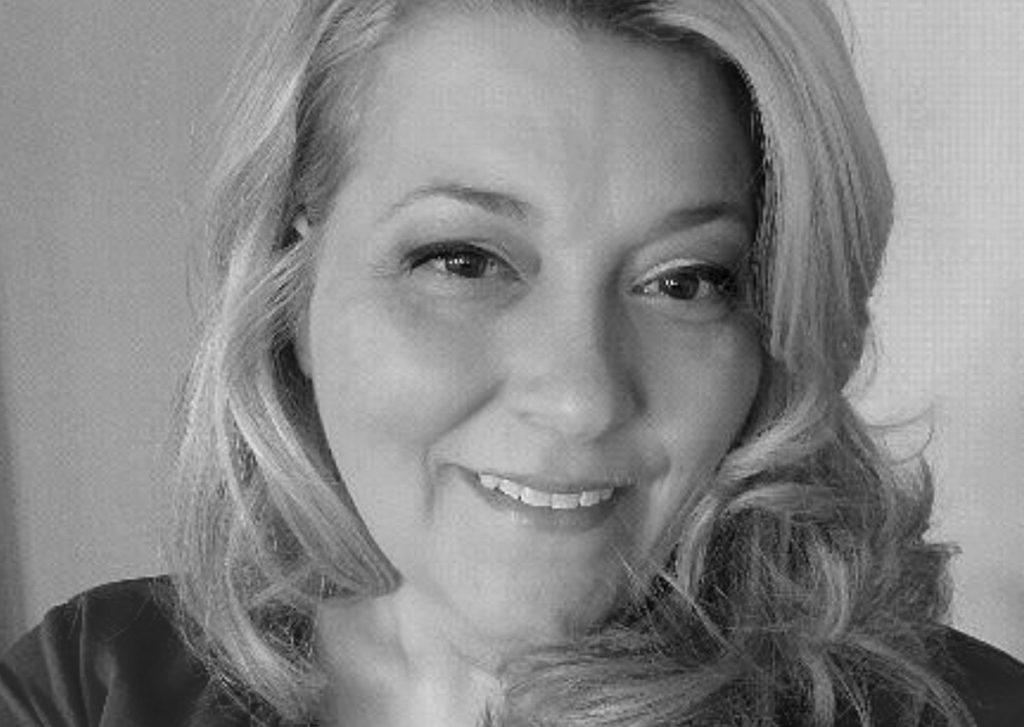
Melanie Lang agreed that there has been a positive increase in the number of women employed in AM in recent years. “From my first experiences with AM several years ago to where we are today, I am glad to say I notice a more diverse community and am proud to be a part of an organisation that has truly helped drive this change. From business leadership and technical experts to speakers and attendees at conferences, there are more women participating and thriving.”
Women in 3D Printing provides a valuable resource for Killingback’s recruiting activities in AM. “Wi3DP has a strong LinkedIn presence, which I am a part of, and, on occasion, I have had referrals from other group members on candidates seeking new careers. The primary benefit for me has been the exceptional networking opportunities offered by Wi3DP, which are instrumental in my work as a recruiter. Most recently, I was a speaker during the TIPE conference on the Youth Track.”
SJ Jones, speaking from a relatively early stage in her AM career, compared to many of the women interviewed here, added that she values the trust which Wi3DP builds between associated recruiters and companies, and potential job candidates. “I feel that in this era where diversity is a hot button topic, hiring a woman in any capacity is desirable for a lot of companies. However, it is significantly easier to trust or accept an invitation for a role when it comes at the recommendation of another member of Wi3DP. Members are fairly aware of each other’s interests, so they can better match or recommend candidates for certain positions.”
Maddie Frank also commented on the value of Wi3DP as a job candidate, stating, “Wi3DP, like any other organisation in AM, is basically a microcosm in itself. I have met people within Wi3DP that I’m like, ‘Your company’s really cool, can I work with you guys?’ and got interviews through those companies, not necessarily because of Wi3DP, but because of the people I’ve met within the organisation. The networking that is happening within this organisation has definitely made me a more valuable candidate in having those introductions.”
This value is only enhanced in the current landscape, where in-person networking opportunities are so limited. “When I’m coming out of school, especially in this new COVID world – and this applies to all students – to have the ability to network with industry people and not have to go to AMUG or RAPID, but just literally jump on a call with their Wi3DP chapter or attend a conference, like the TIPE conference, or go to a 3D Printing Happy Hour, it allows you to basically go out and meet people.”
Tackling the image problem: Wi3DP Next Gen
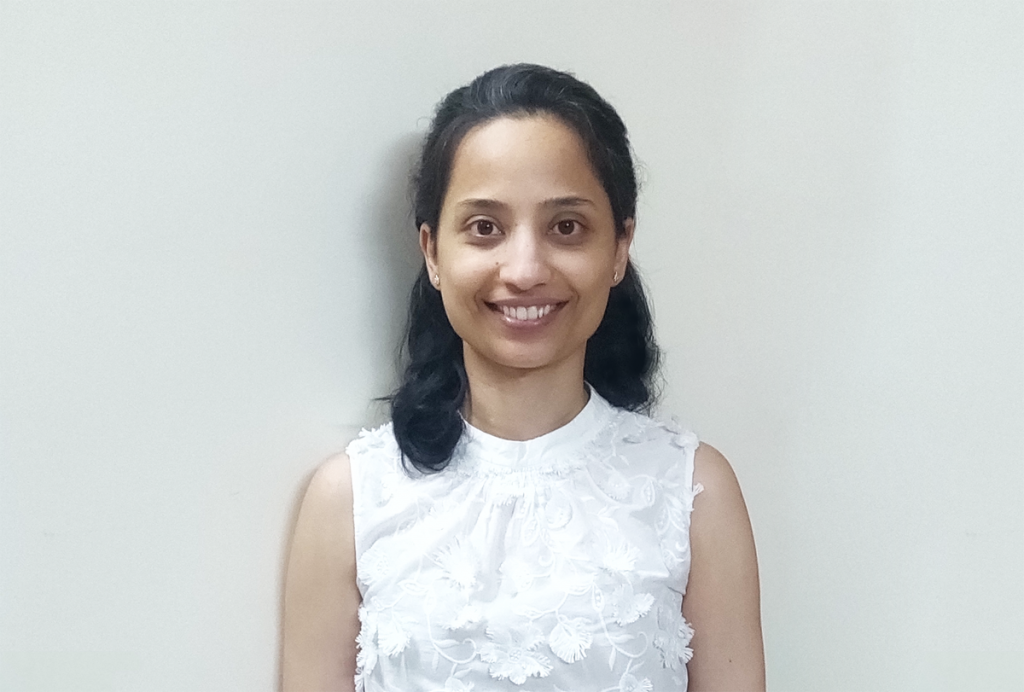
Still in its early stages, Wi3DP’s Next Gen youth initiative is the key weapon in its arsenal as it tackles AM’s image problem and seeks to entice new talent into the industry. I spoke to Janet Kar and Meera Ravi, Director of Digital Viyoma Manufacturing and a Mentorship Community Manager for Wi3DP, about Next Gen’s development, and what it was about their experience in the industry that made them so keen to create a support programme for youth in AM.
“When I joined the 3D printing industry about four years ago, I was pretty quiet – I didn’t know anybody,” Kar recalled. “Until I met one male mentor who told me, ‘this industry is all about who you know and the relationships you’ve built. There’s a lot of vapourware, people don’t know what’s true and what’s not, and they want to work with people they trust.’” From then on, Kar worked hard to embed herself in the community, initially by volunteering for AMUG. “I saw that if you join a community, and you’re open to supporting that community’s growth, there are a lot of amazing opportunities that arise from that – not only friendship, but people who will tell you what’s real, what’s not real, how to solve a problem, how to grow your career, etc. People in 3D printing are really there to help you grow.”
“In university, I participated in a lot of extracurricular student community groups and saw the power of how they can help students develop confidence, learn to network and learn how to build their plan for whatever future they want,” she explained. “Exposure is so important; if you’re not exposed to something, you will never do it. Knowing that the 3D printing industry is in dire need of more talent, I felt pulled to explore how we could bridge all of these pieces together, help accelerate the adoption of 3D printing and convince great people to enter and remain in our industry. I felt like Women in 3D Printing was very much set up to help that. I want to be working with amazing people, and I want that for everyone else, as well.”
Explaining what drew her to Next Gen’s Mentorship Program, Ravi explained, “I’m transitioning in my career from the social impact sector to engineering, leading my family-owned business, a manufacturing service provider. So I was reading a lot of articles and came across Janet, who was very generous in connecting with me and inviting me to come and be part of the community. I was drawn to the Mentorship Program because I had previously run one for a large social enterprise in New York City, focused on immigrant integration. For me, I felt at home working with the community and supporting early-career professionals or anyone looking to transition to 3D printing.”
“Looking at what Women in 3D Printing does best, we realised it has an amazing professional network of vendors, engineers, etc – everyone is here,” explained Kar. “So we came up with three main key areas for Wi3DP Next Gen to focus on: How can we increase the adoption of 3D printing? How can we increase awareness of career opportunities in 3D printing? And how can we provide a community that can help students support their growth?”
“What we found in our research and through conversation with different professionals was that it’s often a very lonely experience, working in engineering and 3D printing. A lot of women, from a recent Deloitte study, around the age of 14–15, don’t feel like they get the support for STEM, and then just drop it. Even in the professional world, I recently spoke to someone who was doing 3D printing, she was the only girl [in her company], and she was about to leave because it didn’t feel like an environment she wanted to be in. After she met some people from the New York chapter [of Wi3DP], it changed her life – she found people she could bounce ideas off of, who were going through the same things and who were able to relate and support each other. That kept her in the industry.”
But can these negative experiences be prevented in the first place? Perhaps, by providing the same level of support women find in their local Wi3DP chapters to girls at a much earlier stage in their AM journey. “How can we replicate the same thing for girls going through this process in STEM, as well as providing them with an awareness of what 3D printing can be?” asked Kar. “A lot of schools have 3D printers, but universities don’t really teach it, unless you’re exposed through an additive programme or as part of a welding programme.”
Through a number of programmes – including, in the near term, a series of AM curricula taught by women in under-served communities; teaching tools to highlight career opportunities in AM, such as the distribution of career cards highlighting professionals in the industry and Ask Me Anything (AMA) interviews with women in AM designed from a high school perspective; the support of Wi3DP school clubs; a mentorship programme featuring both male and female mentors; company tour opportunities and virtual and local Wi3DP events – Next Gen hopes to increase the visibility of female role models in the industry, thus inspiring young people from middle or high school, as well as those already at a university level, to view AM as a viable career path.
“Originally, we wanted to focus on the group that’s most in need, which is underestimated girls in areas that don’t have access to 3D printing,” Kar stated. “But with COVID, it’s pretty hard to get a teacher to want to help students and stay in school longer with afterschool programmes! It’s not very feasible, so we decided to switch gears.”
Now, the short-term goal for Wi3DP Next Gen is to grow its network and community. “We’re really good on the professional side, but our reach for students isn’t as clearly cut and defined,” Kar explained. “When we’re talking about students, what is the age range? We’d love to cover it all, but our current programmes are designed for high school and university students first, because we need help to create that data.”
Next Gen’s first digital event, ‘Meet the Stars of 3D Printing’, welcomed about 270 delegates (Fig. 23). At the time of writing, there are around 750 students in the Next Gen network, a number which continues to grow with each new event and activity the group organises. “We wouldn’t have been able to have this reach if not for the amazing brands who are also trying to close the gender gap and create a supportive network for their employees,” Kar noted. The organisation will continue to hold ‘Meet the Stars’ events, each showcasing a different end-user industry for AM.
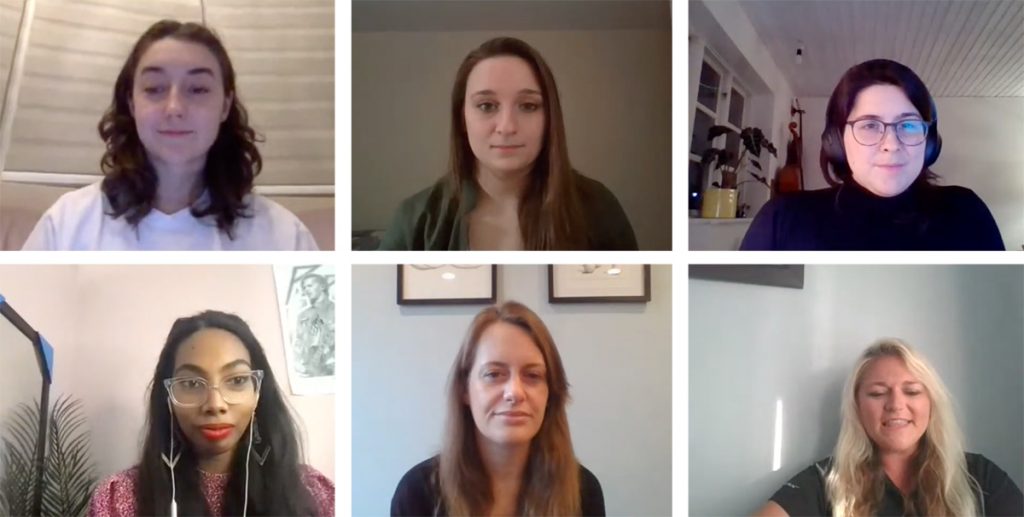
As well as student programmes, Kar explained that the Next Gen programme includes a number of workshops to help educators understand the process of Additive Manufacturing and the career opportunities offered therein. “What we have learned is that teachers are exhausted,” Kar stated. “They love their students, they want to give the best support for them, but they also want to be recognised for their work, and a lot of times they aren’t remembered. We want to provide a stage for teachers to showcase their work, get recognised by industry, get recognised by other teachers and bounce ideas off each other so they can provide the best version of their educational programme to their students.”
To support teachers with this goal, the Next Gen team is currently working on an Additive Manufacturing curriculum vetting programme, through which teachers can showcase their programmes. Judges will vet the submitted programmes and decide on a winner, after which Next Gen will repackage and scale that curriculum to make available to the wider teaching network.
At the level of young enthusiasts and university students seeking careers in AM, the first pilot of Next Gen’s Mentorship Program is underway, running for one quarter and featuring sixty-six pairs of mentors and students; a digital kick-off event was held in late March (Fig. 24). “We’re looking forward to learning from the pilot programme and seeing what we can do in terms of enhancements for subsequent cycles,” stated Ravi. “At the very minimum, the Mentorship Program requires the mentor to meet with a mentee for three sessions. We also provide support through the community of volunteers, offering resources to facilitate continued engagement and support with mentee-specific goals, so that if at the end of the quarter they decide to pursue an internship, an expert is available to help them with that.”
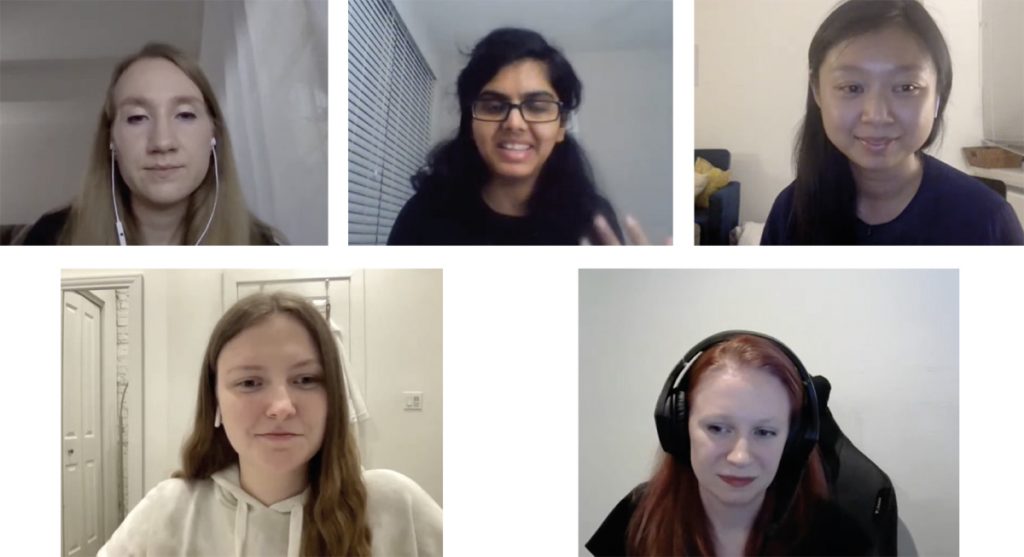
Next Gen also has another programme in the making, one which Ravi hopes will make it possible to connect students with internships. As Kar explained, “We’re looking at ways to add value. Students don’t know what job opportunities there are; mentorship is one way to support their career path.” Another way, she added, is to work with corporate sponsors to highlight the true potential of AM for students coming from schools where the majority of their exposure to AM is based on very small-scale, polymer-based 3D printers of the kind used by makers and hobbyists.
Why is there no ‘Men in 3D Printing’?
In light of the criticism which Wi3DP sometimes faces from certain members of the AM industry, I asked Toure and the other Women in 3D Printing who spoke to me how they would respond to that most common of criticisms which ambassadors of Wi3DP see levelled at them on social media and/or in the workplace. Why is there no Men in 3D Printing?
“We are not a women’s club,” said Toure. “I’ve said it quite a number of times, and it’s true. Yes, we’re a platform to promote women in the industry, but everyone is welcome, and we’re actually starting to promote a few male allies that we want to recognise. In terms of our events, everyone is welcome – they’re not woman focused, they’re industry focused, it just so happens that all of the speakers are female.”
“When you think of it, how many events have only men as speakers? Less and less, but we still have a number of panels with men only on them,” she pointed out. “This wasn’t shocking to the industry up until we started to have woman-only panels, at which point the idea of a single-gender panel suddenly became shocking.”
On whether the aims of the organisation are indicative of ‘reverse sexism’, she explained, “We want 50/50 representation in the industry – we don’t want more than that. It’s not a big ask. Ideally, we wouldn’t need Women in 3D Printing, because every panel would be, as much as possible, gender balanced.”
“I assume that we all understand and agree that in the world we live in, men are automatically awarded space in all public and professional domains,” answered Marie Langer. “However, the same access is not as readily available for women, people of colour and a myriad of other groups. As such, a group like Wi3DP is merely trying to create a space where women can thrive and become more visible to enable women’s advancement in a professional setting. I feel these are positive efforts that are trying to help us create more diversity and inclusion in our small and young industry.”
Maddie Frank, who grew up in the American Midwest, is familiar with the kind of thought process which leads people to criticise Wi3DP. “I grew up in a white manufacturing town, so I get where people are coming from. Even my dad will say ‘Why don’t they have a Men In 3D Printing? And to some extent I’d think, ‘yeah, it does seem rather exclusionary,’ but if you think about it, a lone woman going into a room with five men is just as intimidating as one man going into a group with five women. So, we’re all here on the same page, if you just think about it from the other person’s perspective; everyone gets intimidated when they’re not in a group of people that looks like them or talks like them. You need to lower the boundaries somewhere, and Wi3DP does that.”
In SJ Jones’ view, the fact that some detractors still believe a women’s organisation should be justified to them is indicative of the larger societal problems faced by women, and the industry. “I think that the fact we need to justify the existence of an organisation dedicated to supporting women – who make up half the Earth’s population – speaks volumes about the AM industry. From my perspective, the purpose of Wi3DP is to provide a gender-inclusive space for people to come and be themselves in a supportive, nurturing environment where we all treat each other with respect. In Wi3DP we are freed from the gender norms expected of us in our day-to-day work lives – we don’t have to be submissive, we don’t have to pander to the male ego, we don’t have to watch what we’re saying or how we say it in fear of coming off as too ‘bossy’ or ‘aggressive.’ We can just be ourselves, and that is a privilege we don’t get anywhere else.”
On the differing expectations faced by women in AM in comparison to their male peers, she shared that, “It was recently brought to my attention that I am one of the few women in industry working directly with the metal printing machines. Upon further research and reflection, I think I’m the only one that does not hold a PhD. As I scrolled through the TIPE conference agenda, I counted the number of PhDs that make up Wi3DP and began to wonder how many women had to put Dr in their title to be taken seriously enough in the world of men to achieve the heights of their current positions or roles in AM. It reinstates this feeling that we must be twice as good or twice as smart to have our own seat at the table. Sharing that burden in our small band of sisterhood at Wi3DP can sometimes make it feel more bearable. Being able to be vulnerable, to ask each other for advice – not just about 3D printing, but about how to navigate this male-dominated landscape – I think is one of the greatest and most impactful qualities of this organisation.”
“It would be great if we could one day get to the point where we decide we don’t need a Women in 3D Printing, but, unfortunately, we’re not there yet,” explained Alex Kingsbury. “With women only consisting of 13% of the industry, we are still very much an underrepresented minority group. While we remain a minority group, I think it’s important that we still have a network that provides support and advocacy. I also think it’s important to respect and acknowledge our non-binary and trans folk in 3D printing. Women in 3D Printing is often a space where they can feel comfortable as well, due to the inclusive nature of the organisation and the events we run. So, why isn’t there a Men in 3D Printing? Because there’s simply no need. Men are the majority group in our industry.”
However, Kingsbury echoed Toure’s statement that these events are in no way exclusive of men in the industry. “Fellas, if you’re feeling a little left out, please don’t, as you’re most welcome to come to a Women in 3D Printing event. I think it’s worth mentioning though, that these are ‘female friendly’ spaces, and they may be a bit different to the usual networking event scene, but they’re certainly spaces where you will feel welcome nonetheless.”
Stacey DelVecchio echoed the notion that, as a minority group in the field, it is important that women have a network to provide support, advocacy, and simple social networking. “It’s not unusual for women to be the only one in their work group. For the men in the industry, it’s difficult to understand that it can be lonely if you’re the only woman in the room. That’s not to say that the men aren’t welcoming or that they don’t respect us as women; they usually are welcoming and they usually do respect us. But there’s also something comforting about connecting with someone who looks like you. And, hence, the need for a group like Wi3DP. So why isn’t there a Men in 3D Printing organisation? There doesn’t have to be, as all the men need to do is look around any company or group they are in and they will see people that look like them. It’s almost like they have a ready-built Men in 3D Printing group available.”
“I will admit that I was not initially sold on women’s organisations as a whole in the workplace because I did not want to be recognised as the first woman anything, or the first Black woman anything,” reflected Lisa Block. “I wanted to be recognised as the best in class, best in my industry, just the best, because I was the best, not because I was a woman. However, that opinion quickly changed when I realised that men are hired and compensated at numbers more than double the rate of women for the same position. I can remember being taught that I had to be smarter, harder and faster than my male counterparts to even be allowed in the room, let alone to be compensated at the same rate.”
“My years working hand in hand with Human Resources showed me that it was a real problem, and no one was talking about it,” she continued. “This experience changed my mind. And thank goodness for the men who were willing to teach me that lesson, because every lesson I have learned in business, positive or negative, I’ve learned from men. For 90% of my career, I have worked in environments where I was the only female, or one of a few. I am truly blessed to be in an environment now where I am supported not only in words, but some of my male counterparts actually attended the TIPE conference with me as well.”
“Wi3DP is addressing institutionalised, unjust treatment of women in the workforce based on outdated societal norms,” agreed Melissa Orme. “It is the organisation’s intent to provide women with opportunities to network with other women and men in all aspects of the 3D printing value chain and to be a resource to industry to increase diversity in the workplace. The organisation welcomes male membership as well, as men play a critical role in creating a more diverse workforce through the recruitment activities sponsored by Wi3DP.”
Conclusion
So, what are the benefits of an organisation like Women in 3D Printing? How do we justify the existence of an organisation which, by its nature, highlights one social characteristic over another?
It is clear from the experiences and statistics reported in this article that women remain very much a minority group in the AM industry, and that this can have a significant impact not only on the career prospects and wellbeing of individual women in AM, but on our industry’s ability to attract the talent it so badly needs if it is to tackle the challenges of industrialisation and truly scale AM to meet the needs of large-scale manufacturing. Using Wi3DP as a marketing tool to reach young women and girls at early stages of their education, the industry stands a far better chance of filling this talent gap than it does in a landscape where the group most highly represented in higher education is the least represented in engineering [1].
Study after study has shown the benefits that diversity, not just in gender, but in all forms, brings to businesses. Gender diversity, at its core, asks only for 50% of the Earth’s population to be represented equally as 50% of the workforce. This goal remains a long way off, but by encouraging their employees to get involved in Wi3DP and showing the organisation their support, AM companies can demonstrate their investment in the wellbeing and development of their staff, as well as their open-mindedness, and encourage applications from yet more diverse talent. As noted by Nora Toure and echoed by others throughout this article: gender is just the beginning.
Acknowledgements
My thanks to the Additive Manufacturing industry professionals who took time out of their busy schedules to speak to me about their experiences and opinions as women in this industry, and without whose time and input this article would not have been possible.
Nora Toure
[email protected]
Melanie Lang
[email protected]
Marie Langer
[email protected]
Tali Rosman
[email protected]
Stacey DelVecchio
[email protected]
Lynda McKinney
[email protected]
Alison Wyrick Mendoza
[email protected]
Jennifer Killingback
jennifer.killingback@alexanderdan
ielsglobal.com
Dr Laura Cordova
[email protected]
Lisa D Block
[email protected]
Maddie Frank
[email protected]
SJ Jones
[email protected]
Dr Melissa Orme
[email protected]
Alex Kingsbury
[email protected]
Janet Kar
[email protected]
Meera Ravi
[email protected]
Author
Emily-Jo Hopson-VandenBos
Deputy Editor & Features Writer
Metal AM magazine
[email protected]
References
[1] ‘Women earned majority of doctoral degrees in 2017 for 9th straight year and outnumber men in grad school 137 to 100’, by Mark J Perry, The American Enterprise Institute, www.aei.org/carpe-diem/women-earned-majority-of-doctoral-degrees-in-2017-for-9th-straight-year-and-outnumber-men-in-grad-school-137-to-100-2/
[2] Alexander Daniels Global, Additive Manufacturing Salary Survey 2018, www.alexanderdanielsglobal.com/the-salary-survey-2018/







